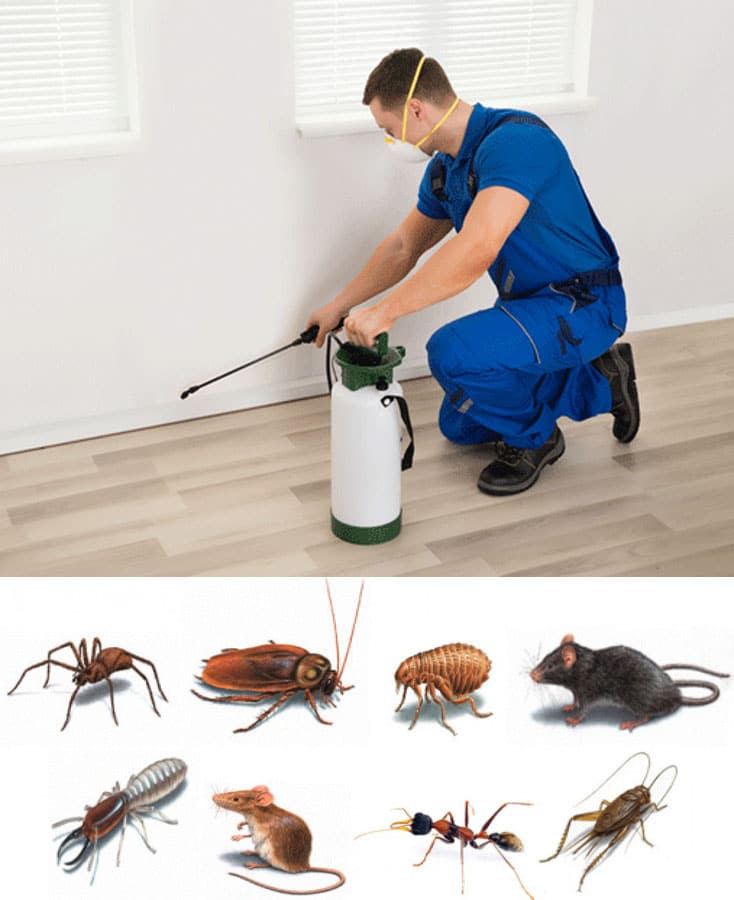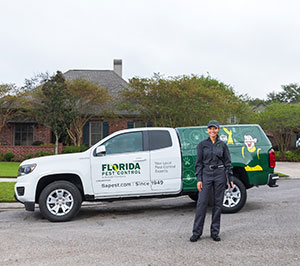Reputable A1 Bed Bug Exterminator Charlotte - Do Away With Bed Bugs Quick
Reputable A1 Bed Bug Exterminator Charlotte - Do Away With Bed Bugs Quick
Blog Article
Bed Pest Treatment Break Down: Comparing Chemical Vs. Non-Chemical Solutions
In the world of pest control, specifically when managing the relentless issue of bed pests, the option between chemical and non-chemical treatment services can be a pivotal one. Both techniques use distinctive advantages and disadvantages, influencing aspects such as effectiveness, safety and security considerations, and general cost. By checking out the nuanced details of each method, a clearer understanding of which course to go after in attending to a bed pest invasion can be achieved.
Efficiency of Chemical Treatments
Chemical treatments for bed insect invasions have been commonly identified for their rapid and powerful effectiveness in getting rid of these insects. When taking into consideration the efficiency of chemical treatments, it is important to understand that they can provide a fast and thorough option to a bed insect trouble. Expert pest control specialists often rely on pesticides to target bed bugs at various stages of their life cycle, consisting of fairies, eggs, and adults. These chemicals generally work by disrupting the bed pests' nervous system, bring about paralysis and ultimate death.
In addition, chemical treatments have the benefit of supplying recurring effects, suggesting that they can continue to get rid of bed insects even after the first application. This recurring activity is especially beneficial in combating any type of prospective re-infestations. In addition, the rapid activity of chemical therapies can bring alleviation to people encountering serious bed bug invasions, allowing them to reclaim control of their space rapidly.
Safety Worry About Chemical Solutions
One crucial aspect that requires cautious factor to consider when using chemical options for bed insect treatment is guaranteeing the security of owners and the setting. Direct exposure to certain chemicals utilized in bed bug therapies can lead to respiratory problems, skin inflammation, or various other damaging responses, specifically in people with pre-existing problems or level of sensitivities.
In addition, the ecological influence of chemical remedies is an additional considerable consideration. Some pesticides used in bed insect therapies may be damaging to valuable insects, wildlife, and ecosystems if they seep into the dirt or water systems. It is important to make use of chemical therapies deliberately, following security guidelines, and taking into consideration much less poisonous choices to minimize these threats and ensure the risk-free and efficient administration of bed bug infestations.
Advantages of Non-Chemical Techniques
Thinking about the possible security issues and ecological effect connected with chemical options for bed pest therapy, checking out non-chemical approaches provides a promising alternative with several distinctive benefits. Non-chemical approaches offer a more secure alternative for families, especially those with pet dogs, individuals, or kids sensitive to harsh chemicals. These methods remove the threats of direct exposure to toxic substances, lowering the capacity for damaging wellness impacts. Furthermore, non-chemical treatments are environmentally friendly, as they do not contribute to air or water contamination, making them a sustainable choice for bug control.
In addition, non-chemical solutions can be effective in targeting bed insects, including hard-to-reach locations where chemical treatments may not pass through. Approaches such as warm therapy, vacuuming, vapor cleansing, and bed mattress coverings offer thorough eradication without using hazardous chemicals. Furthermore, non-chemical methods can be less turbulent, requiring marginal preparation and permitting quicker reentry into treated areas. In general, selecting non-chemical bed pest therapy techniques not just prioritizes safety and security and environmental protection but pest control corporation also makes certain reliable and comprehensive insect control.
Limitations of Non-Chemical Treatments

In addition, non-chemical therapies typically call for numerous applications to attain effective elimination. This can be lengthy and might not always guarantee total elimination of all bed bugs and their eggs, especially in surprise or hard-to-reach locations.
Additionally, the success of non-chemical therapies heavily depends on proper execution and thoroughness, which can be challenging for people without specialist proficiency. Insufficient application of non-chemical methods may lead to incomplete removal, causing relentless invasions and the requirement for extra treatments.
As a result, while non-chemical therapies have their advantages, it is necessary to acknowledge these restrictions and consider them when establishing one of the most effective approach for taking care of bed bug problems.
Expense Contrast: Chemical Vs. Non-Chemical Options
Offered the limitations connected with non-chemical therapies, a crucial element to review in the context of bed pest management is the cost comparison in between chemical and non-chemical options. Chemical therapies normally include the application of pesticides by specialists, which can vary from $250 to $900 per area, depending upon the extent of the invasion and the dimension of the area to be treated. In comparison, non-chemical treatments like heat therapy or vapor can be a lot more expensive, with expenses varying from $1,000 to $6,000 for a whole home. While the first price of chemical therapies may seem reduced, multiple treatments might be called for to fully get rid of the problem, potentially raising the overall expense. On the various other hand, non-chemical options may offer my blog an extra eco-friendly and lasting solution, although they can be cost-prohibitive for some people. Inevitably, when considering the price of bed insect treatment options, it is essential to weigh the upfront costs versus the effectiveness and lasting sustainability of the picked approach.
Verdict

Taking into consideration the prospective security concerns and ecological influence connected with chemical options for bed bug treatment, exploring non-chemical strategies see this here presents an encouraging option with a number of unique advantages.Offered the limitations associated with non-chemical treatments, a vital facet to evaluate in the context of bed insect monitoring is the cost comparison in between chemical and non-chemical options. In comparison, non-chemical therapies like warm treatment or steam can be extra costly, with costs ranging from $1,000 to $6,000 for a whole home. While the first expense of chemical therapies may appear reduced, multiple therapies might be needed to completely eradicate the infestation, potentially raising the general expense.In verdict, when contrasting chemical and non-chemical bed bug treatment options, it is crucial to consider effectiveness, security, benefits, constraints, and cost.
Report this page